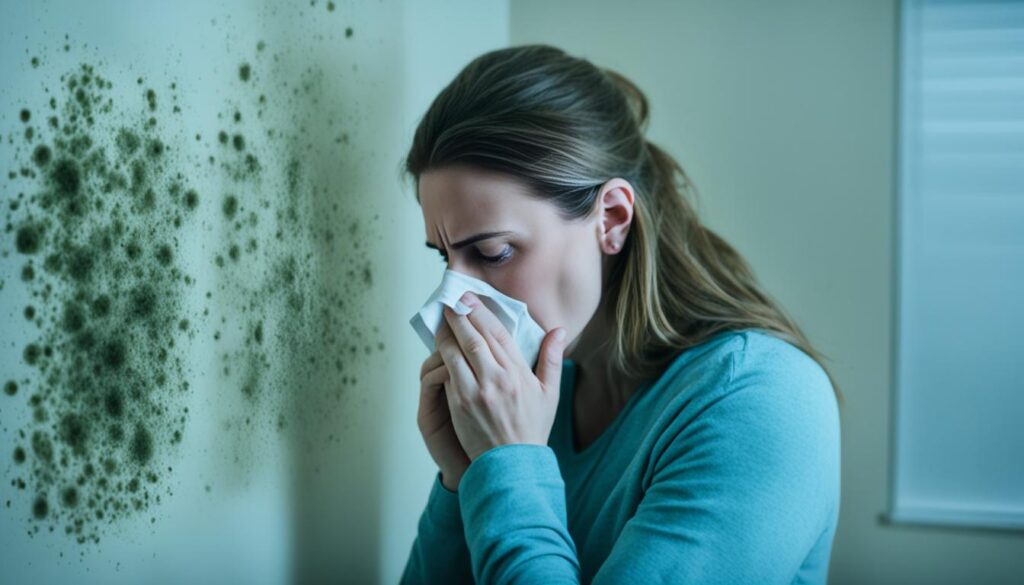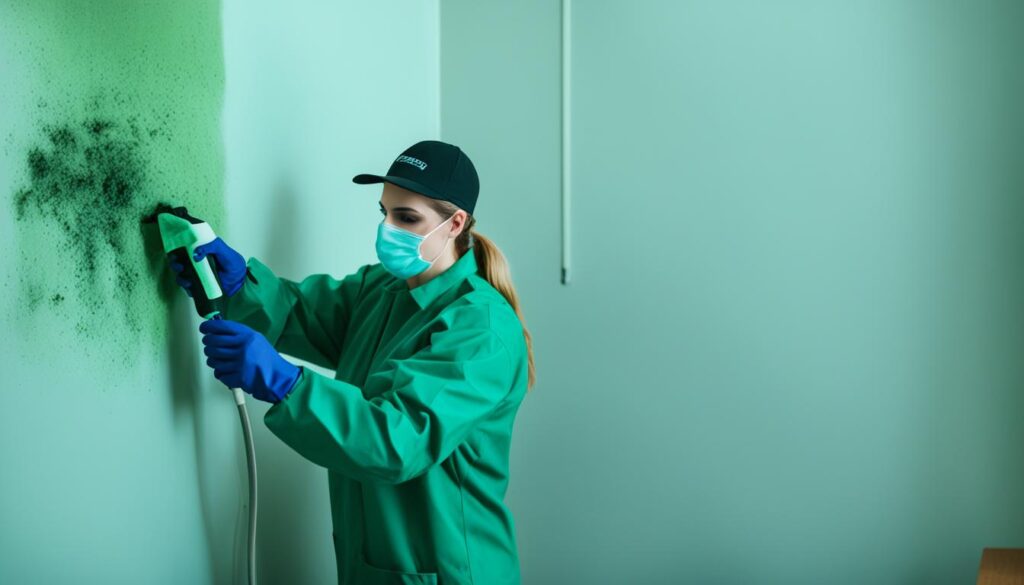
Understanding Toxic Mold Symptoms – Stay Safe
Welcome to our informative guide on understanding toxic mold symptoms and how to safeguard your health and home from hazardous exposure. Mold is a common issue in many households and can lead to various health problems if left untreated. By recognizing the signs of toxic mold and taking appropriate action, you can ensure a safe and healthy living environment for you and your loved ones.
Key Takeaways:
- Recognizing toxic mold symptoms is crucial for safeguarding your health and home.
- Early detection and prompt action are vital to prevent the harmful effects of mold exposure.
- Identifying common signs of toxic mold exposure can help you address mold problems effectively.
- Dealing with toxic mold symptoms requires seeking professional help and implementing preventive measures.
- Stay informed and take proactive measures to protect yourself and your family from the dangers of toxic mold.
Identifying Toxic Mold Symptoms
One of the key steps to safeguarding your health and home from the dangers of toxic mold is being able to identify the common signs and symptoms of mold exposure. By recognizing these symptoms early on, you can take immediate action to address any mold problems in your environment.
Here are some of the most frequently observed toxic mold symptoms:
1. Respiratory Issues
Individuals exposed to toxic mold often experience respiratory problems such as persistent coughing, wheezing, shortness of breath, and sinus congestion. These respiratory symptoms may worsen over time.
2. Allergic Reactions
Allergic reactions are common in individuals with mold sensitivity. Symptoms may include sneezing, itching, watery eyes, and skin rashes. Allergic reactions can range from mild to severe, depending on the individual’s sensitivity.
3. Fatigue and Weakness
Toxic mold exposure can lead to fatigue, lethargy, and general weakness. Individuals may feel constantly tired, have difficulty concentrating, and experience a decrease in energy levels.
4. Headaches and Dizziness
Headaches and dizziness are commonly reported symptoms of mold exposure. These symptoms may be persistent and can significantly impact daily activities.
5. Digestive Issues
Some individuals exposed to toxic mold may experience digestive issues such as nausea, diarrhea, and stomach cramps. These symptoms can be disruptive and affect overall well-being.
6. Skin Irritation
Exposure to mold can cause skin irritation and inflammation. This may result in redness, itching, and rashes on the affected areas of the skin.
It is important to remember that the severity and frequency of these symptoms may vary depending on the individual’s overall health, the type of mold present, and the duration and level of exposure.
If you suspect that you or your loved ones are experiencing toxic mold symptoms, it is crucial to seek medical advice and consider professional mold testing and remediation services to address the issue effectively.
| Symptoms | Description |
|---|---|
| Respiratory Issues | Persistent coughing, wheezing, shortness of breath, and sinus congestion |
| Allergic Reactions | Sneezing, itching, watery eyes, and skin rashes |
| Fatigue and Weakness | Constant tiredness, difficulty concentrating, and decreased energy levels |
| Headaches and Dizziness | Persistent headaches and dizziness |
| Digestive Issues | Nausea, diarrhea, and stomach cramps |
| Skin Irritation | Redness, itching, and rashes on the skin |
Remember, early detection and prompt action are crucial when it comes to dealing with toxic mold in your environment. By being knowledgeable about the symptoms and taking immediate steps to address any mold-related issues, you can protect your health and create a safe living space for yourself and your family.

Dealing with Toxic Mold Symptoms
When it comes to dealing with toxic mold symptoms, taking the right steps is crucial for your health and well-being. Whether you have already experienced symptoms or want to prevent them, here are some practical tips and advice to help you manage the effects of mold exposure.
1. Seek Professional Help
If you suspect or have confirmed toxic mold in your home, it is essential to consult with a professional mold remediation specialist. They have the expertise and necessary equipment to handle mold safely and effectively. A professional assessment and remediation plan can minimize exposure and prevent further health risks.
2. Improve Ventilation
Since mold thrives in damp and poorly ventilated areas, improving ventilation in your home is vital. Open windows, use exhaust fans in bathrooms and kitchens, and consider installing a dehumidifier to reduce moisture levels. Good airflow will help prevent mold growth and minimize the risk of symptoms.
3. Clean and Dry Thoroughly
If you discover mold in your home, it’s important to clean and dry the affected areas promptly. Use a mixture of water and detergent to remove visible mold, and ensure that surfaces are completely dry afterward. Remember to wear protective clothing, gloves, and a mask during the cleaning process to avoid further exposure.
4. Address Water Leaks and Moisture Issues
Water leaks and excess moisture provide a breeding ground for mold. Inspect your home regularly for any signs of leaks or moisture problems, such as water stains, musty odors, or damp areas. If you find any issues, fix them promptly and thoroughly dry the affected areas to prevent mold growth.
5. Take Care of Your Health
If you experience symptoms related to toxic mold exposure, it’s essential to prioritize your health. Consult a healthcare professional who specializes in environmental medicine or toxicology to assess your symptoms and provide appropriate treatment. They can help you develop a personalized plan to manage your symptoms and improve your overall well-being.
By following these tips and advice, you can take proactive steps to deal with toxic mold symptoms and protect yourself and your loved ones. Remember, early intervention and preventive measures are key to effectively managing the effects of mold exposure.

Conclusion
In conclusion, understanding toxic mold symptoms is vital for safeguarding your health and home. By being able to identify the common signs of toxic mold exposure, you can take immediate action to address any mold problems in your environment. Remember, early detection is key.
If you experience symptoms such as respiratory issues, allergic reactions, or persistent headaches, it is crucial to seek professional help. Mold remediation experts can assess the extent of the mold infestation and provide effective solutions to eliminate the mold and prevent future growth.
Additionally, implementing preventive measures such as ensuring proper ventilation, controlling humidity levels, and fixing any water leaks can help reduce the risk of toxic mold growth. Regular inspections and maintenance can also play a significant role in identifying and addressing mold issues before they become severe.
By staying informed about toxic mold symptoms and taking proactive measures, you can protect yourself and your loved ones from the potential health hazards associated with mold exposure. Remember, the health and safety of your home should always be a top priority.




